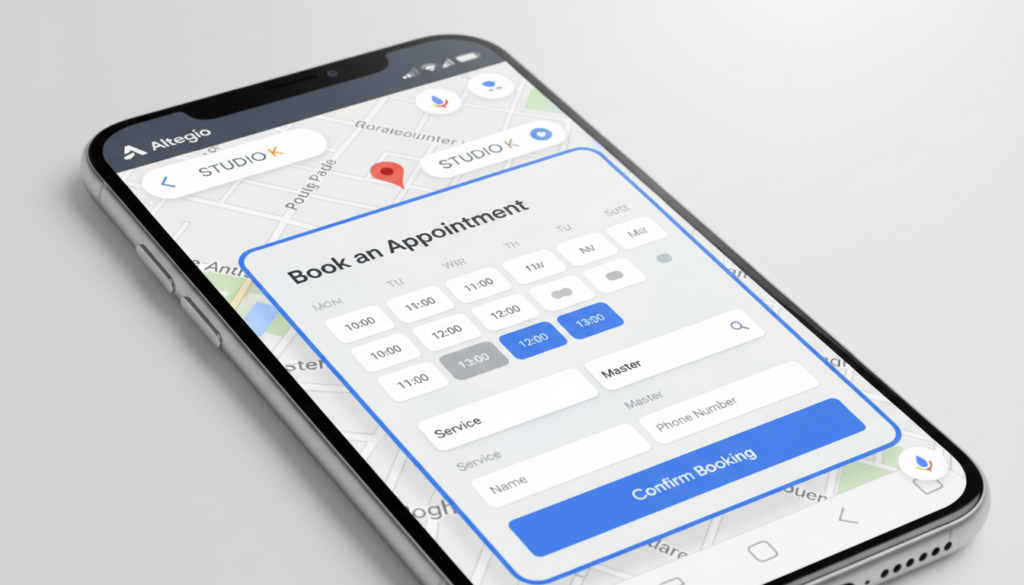Efficient patient scheduling is the backbone of modern healthcare management. By effectively coordinating appointments, medical organizations can improve patient experiences, minimize waiting times, and make the best use of available resources. With a variety of appointment booking methods and evolving healthcare technologies, it has become essential for clinics and hospitals to select the most appropriate systems for their unique needs.
Patient Appointment Scheduling Basics
Patient scheduling is a crucial process in healthcare management, directly impacting patient satisfaction, operational efficiency, and overall hospital workflow. Patient appointment booking involves organizing and allocating time slots to ensure patients receive timely medical care while maximizing the productivity of healthcare providers. The use of efficient scheduling systems and software solutions helps to minimize wait times, reduce no-shows, and optimize the use of available resources.
The evolution of booking methods and technologies in healthcare has significantly improved the management of patient flows. Proper scheduling enhances the patient experience and contributes to a more organized hospital or clinic environment. Modern medical calendar management techniques utilize advanced processing, clustering, and management technologies to streamline the scheduling process, making it easier for both patients and staff.

Types of Patient Appointment Scheduling
There are several main types of patient appointment booking methods, each designed to address different operational challenges and patient needs. Understanding these types allows healthcare organizations to implement the most effective approach for their unique circumstances.
Wave
Wave medical scheduling is a method where several patients are scheduled at the same start time within a defined block, usually every hour. As each patient arrives, they are seen in the order of arrival. This system is particularly effective in environments where appointment durations are unpredictable, as it allows flexibility for handling both quick and more time-consuming visits. This type helps in reducing patient wait times and increases the efficiency of healthcare providers, especially in busy clinics.
Time-Slot
Time-slot scheduling is one of the most commonly used types of appointment planning in medical practice. In this method, each patient is assigned a specific, fixed time slot for their appointment. This type of patient scheduling of appointments is ideal for practices where appointment durations are predictable, as it minimizes overlapping and reduces wait times. Time-slot planning is often managed using medical timetabling software to ensure smooth operations and proper allocation of resources.
Open Booking
Open booking scheduling, sometimes called open access booking, allows patients to book appointments within a general time frame rather than at a specific time. Patients are seen in the order of their arrival during the open booking period. This method provides maximum flexibility for patients and is commonly used in urgent care clinics or practices that cater to walk-in patients. Open booking timetabling is effective for handling high patient volumes and unplanned visits, reducing the risk of no-shows.
Double Booking
Double booking scheduling involves timetabling two or more patients at the same time for the same provider. This method is used in situations where it is anticipated that one patient may require less time than scheduled, or when certain procedures can be performed concurrently. Double booking organization of appointments can increase the utilization of provider time but must be managed carefully to prevent excessive patient wait times and provider overload.
Stream
Stream scheduling, also known as time-specific or individual appointment setting, assigns each patient a unique appointment time based on the estimated duration of their visit. This technique allows for a steady flow of patients throughout the day and is often supported by booking software. Stream timetabling is ideal for practices where appointment lengths vary, as it helps balance the provider’s workload and ensures that patient appointments are spaced appropriately.
Cluster
Cluster scheduling groups patients with similar appointment needs or conditions together within a specific time frame. For example, a clinic may schedule all diabetes follow-up appointments on one day or during a specific block of time. Cluster planning enhances efficiency by allowing providers to focus on specific types of visits or treatments, which can streamline both administrative and clinical processes.
Modified Wave
Modified wave scheduling is a variation of the standard wave booking method. In this approach, patients are scheduled in groups at the beginning of each hour, with one or two slots left open towards the end to accommodate any delays or emergencies that may arise. Modified wave timetabling helps balance patient flow and reduces bottlenecks, making it a practical choice for busy healthcare facilities.
Combination
Combination scheduling incorporates elements from different calendar management methods to create a system tailored to the specific needs of a healthcare organization. For example, a clinic may use stream planning for routine visits and open booking timetabling for urgent cases. This flexible approach allows for the efficient handling of various types of appointments and patient preferences.
How to Choose the Right Scheduling Method for Your Organization
Selecting the most suitable scheduling method depends on several factors, including the type of healthcare facility, patient volume, provider availability, and the nature of medical services offered. Here are key considerations for choosing the right patient appointment scheduling method:
- Patient Demographics and Preferences: Understanding your patients’ needs and expectations is critical. Younger patients may prefer the convenience of online scheduling and flexible open booking, while older adults may appreciate fixed time slots and personal reminders.
- Type of Medical Practice: Specialty clinics, general practitioners, and urgent care centers have different scheduling requirements. For example, specialty clinics might benefit from cluster timetabling, while urgent care facilities often rely on open booking calendar management to handle walk-ins.
- Provider Workload: Efficient scheduling should balance provider workload to prevent burnout and ensure high-quality care. Stream booking and modified wave arranging can help distribute appointments evenly throughout the day.
- Technology and Software: Implementing modern booking software and management systems can automate many aspects of patient scheduling, including appointment reminders, rescheduling, and data processing. These tools support best practices and make it easier to adjust calendar management methods as needed.
- Operational Efficiency: The chosen scheduling technique should optimize the flow of patients, minimize wait times, and maximize the use of resources. Regularly reviewing scheduling performance and soliciting feedback from staff and patients can help identify areas for improvement.
Optimal Approaches to Patient Scheduling
To achieve optimal results, healthcare organizations should adopt patient scheduling best practices:
- Utilize scheduling software to automate and streamline the process.
- Regularly review and adjust scheduling methods based on data and feedback.
- Train staff on different scheduling techniques and technologies.
- Offer multiple scheduling options to accommodate diverse patient needs.
- Monitor key performance indicators such as no-show rates, wait times, and provider utilization.
- Communicate appointment details clearly to patients to reduce missed appointments.
- Integrate scheduling with other healthcare management systems for seamless workflow.
Adhering to these best practices ensures that scheduling processes are patient-centered, efficient, and adaptable to changing demands in healthcare.
Conclusion
Patient appointment setting plays a fundamental role in healthcare management, directly influencing both patient satisfaction and organizational efficiency. By understanding and implementing the appropriate types of appointment scheduling such as wave, time-slot, open booking, double booking, stream, and cluster healthcare providers can optimize their processes and deliver higher quality care.
The effective use of modern scheduling software, combined with best practices and continuous improvement, ensures that both patients and providers benefit from well-organized appointment systems. Whether operating a large hospital or a small clinic, selecting the right scheduling method is essential for meeting patient needs and achieving operational excellence.




